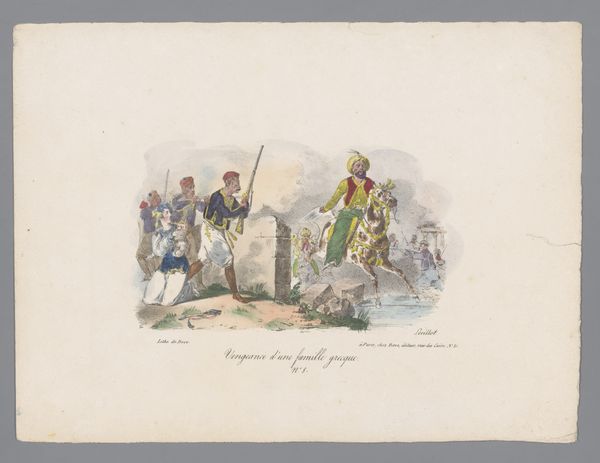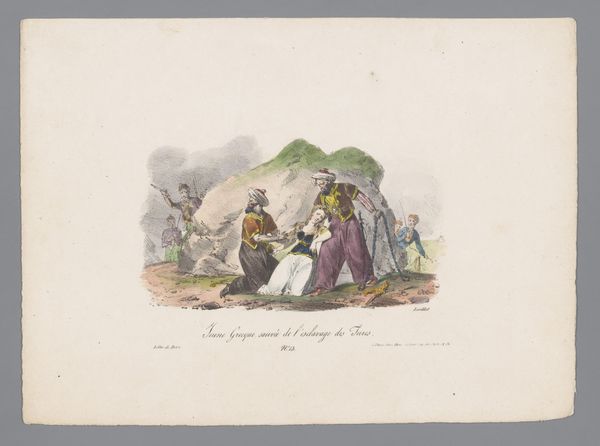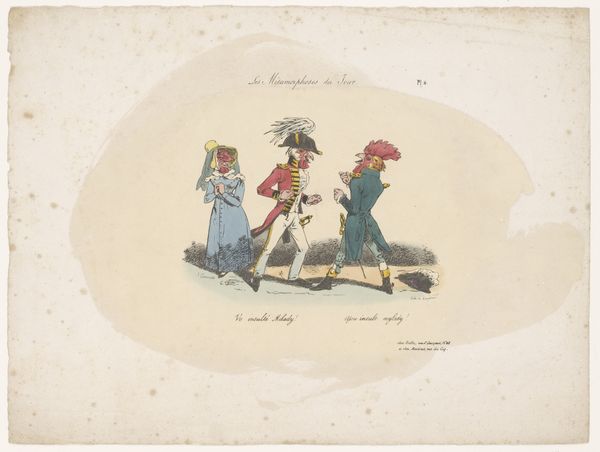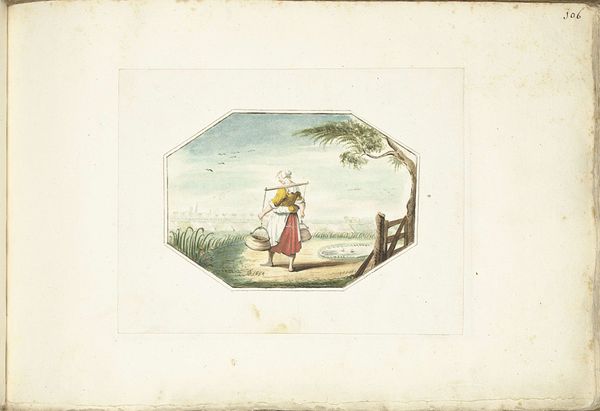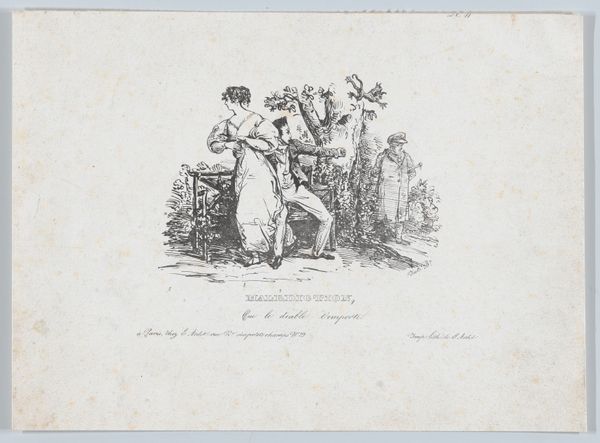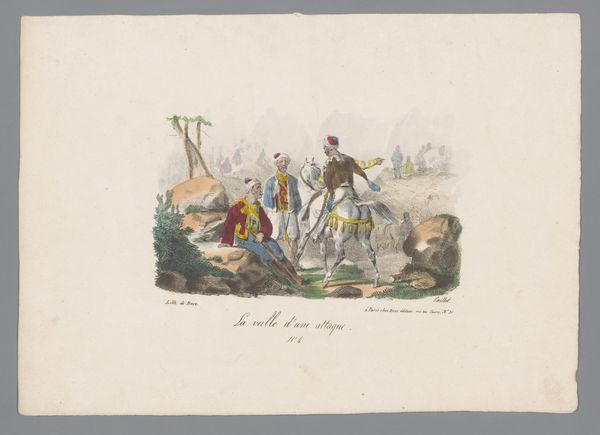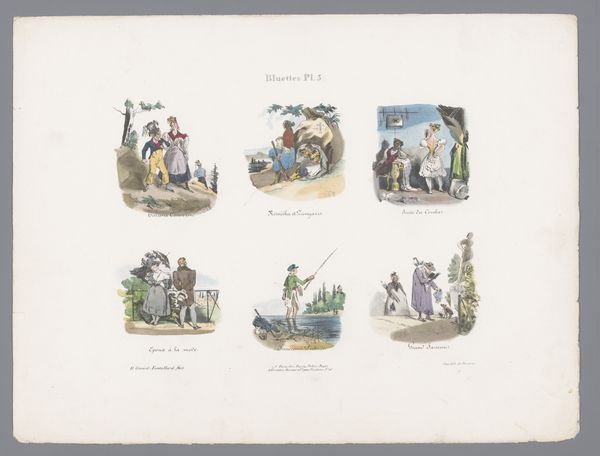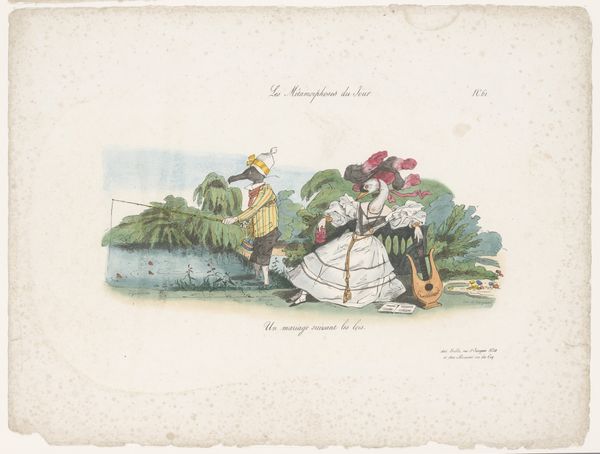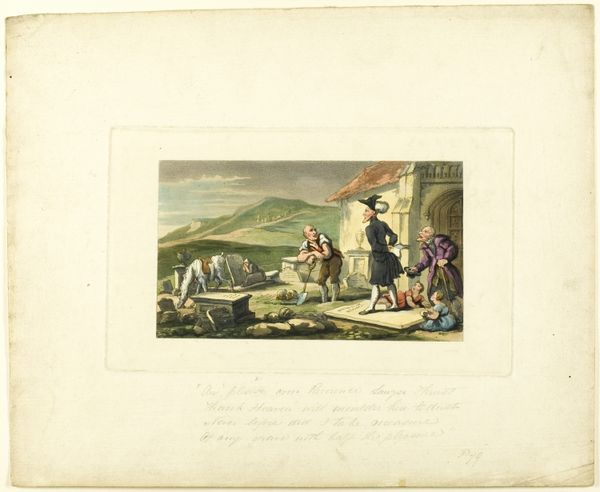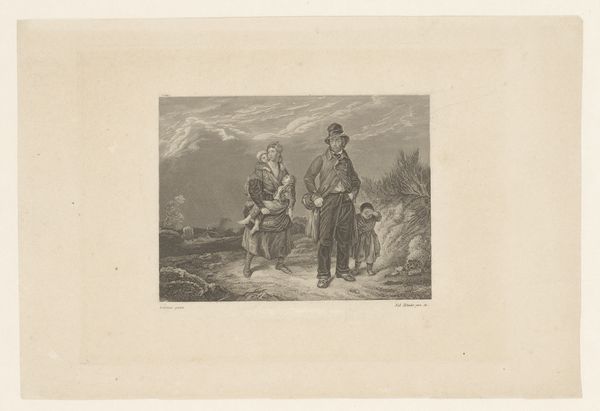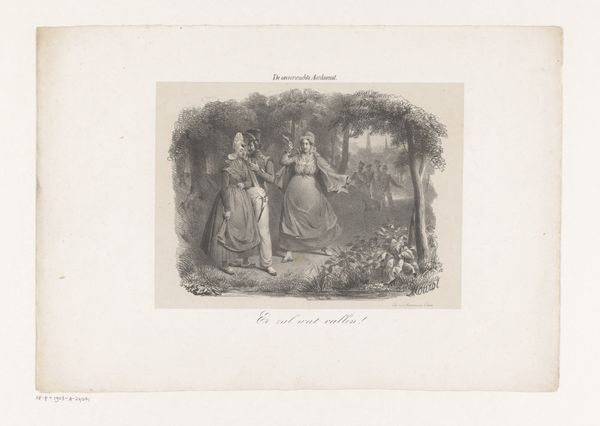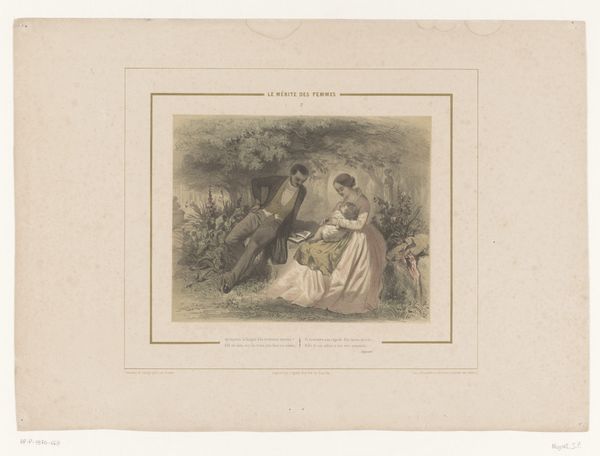
Griekse man en vrouw brengen een krans bij het graf van een verloren vriend 1829 - 1835
0:00
0:00
watercolor
#
landscape
#
figuration
#
watercolor
#
romanticism
#
history-painting
Dimensions: height 214 mm, width 285 mm
Copyright: Rijks Museum: Open Domain
Curator: At first glance, it's a sentimental scene rendered with delicate lines and muted watercolors. The composition strikes me as deliberately staged, focusing our attention on the grieving figures. Editor: Precisely. The artwork is titled “Griekse man en vrouw brengen een krans bij het graf van een verloren vriend,” which translates to “Greek man and woman bringing a wreath to the grave of a lost friend." Karl Loeillot-Hartwig created it sometime between 1829 and 1835. It speaks volumes about the philhellenism prevalent in Europe during the Greek War of Independence. Curator: The monument in the scene provides a very central visual element; its hard surface seems to contradict the fluidity of the scenery surrounding it. Notice also how it uses linear techniques that help define the different zones of the image: the grass, the figures in the center, the village in the background. Editor: Absolutely, that stark contrast also symbolizes a point of conflict: on the one hand, you have the promise of a new country; on the other hand, the ever-present symbol of death. I think, too, about the cultural obsession with ancient Greece. There's an almost theatrical quality to how they’re dressed, a conscious invoking of classical ideals through a contemporary lens. It underscores the prevailing artistic and political movements of the time. Curator: And how Loeillot-Hartwig uses color and space is fundamental for this theme of Greek idealism: Observe how, compositionally, the characters don’t appear as central elements of the image, as much as figures immersed within the landscape, suggesting the grandeur and power of Greece. Editor: It served as a reminder of the sacrifices made, a potent symbol during a time when many in Europe championed the cause of Greek independence. By interweaving elements of history, politics, and emotion, the artwork becomes a time capsule reflecting the spirit of an era. Curator: After this review, what endures for me is how, in a way, Hartwig found balance by finding compositional organization that represents visually and semantically the turmoil that freedom always accompanies. Editor: Yes, what truly stays with me is the visual reminder that every revolution holds personal losses, turning historical events into profoundly human narratives.
Comments
No comments
Be the first to comment and join the conversation on the ultimate creative platform.
